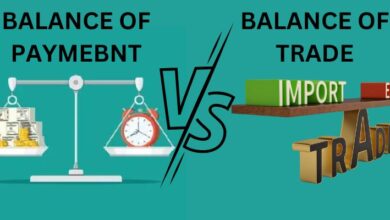
The top 20 cryptocurrencies by market capitalization are currently:
- Bitcoin (BTC)
- Ethereum (ETH)
- Binance Coin (BNB)
- Tether (USDT)
- Cardano (ADA)
- Dogecoin (DOGE)
- XRP (XRP)
- Polkadot (DOT)
- Uniswap (UNI)
- Solana (SOL)
- Litecoin (LTC)
- Chainlink (LINK)
- Bitcoin Cash (BCH)
- Stellar (XLM)
- Cosmos (ATOM)
- Ethereum Classic (ETC)
- Monero (XMR)
- Aave (AAVE)
- Nem (XEM)
- VeChain (VET)
Keep in mind that the cryptocurrency market is highly volatile and these rankings can change rapidly. So that the top 20 cryptocurrencies will change in time.
Bitcoin (BTC) The 1st of the top 20 cryptocurrencies
Bitcoin is the first and most well-known cryptocurrency. It was created in 2009 by an individual or group of individuals using the pseudonym Satoshi Nakamoto. Bitcoin is decentralized and operates on a blockchain, a public ledger of all transactions. Transactions are verified by a network of users called “miners,” who are rewarded with new bitcoins for their efforts. Bitcoin has gained widespread acceptance and has become a store of value and a means of exchange.
Ethereum (ETH)
Ethereum is a decentralized platform that enables the creation of smart contracts and decentralized applications (dApps). It was created in 2015 by Vitalik Buterin and has its cryptocurrency called Ether (ETH). The Ethereum platform is often used to create new tokens and launch initial coin offerings (ICOs).
Binance Coin (BNB)
It is on the highly growable top 20 cryptocurrencies list. Binance Coin is the native cryptocurrency of the Binance exchange, one of the largest and most popular cryptocurrency exchanges in the world. Binance Coin can be used to pay trading fees on the Binance exchange and can also be used to invest in other projects on the Binance platform.
Tether (USDT)
Tether is a stablecoin, meaning it is pegged to the value of the US dollar. This makes it less volatile than other cryptocurrencies. Tether is used to facilitate trading on cryptocurrency exchanges, as it allows traders to move funds between different cryptocurrencies without having to convert back to fiat currency.
Cardano (ADA) 
Cardano is a smart contract platform that aims to improve upon the limitations of existing blockchain technologies. It was created by IOHK, a blockchain research and development company, and was launched in 2017. Cardano uses a unique consensus algorithm called Ouroboros, which is designed to be more energy-efficient than other proof-of-work algorithms.
Dogecoin (DOGE)
Dogecoin is a cryptocurrency that was created as a joke in 2013, based on the popular “Doge” internet meme. Despite its origins, Dogecoin has gained a significant following and has a market capitalization of several billion dollars. Dogecoin’s main use case is as a form of digital currency for online transactions, but also it’s used as a form of tip or donation on social media platforms.
XRP (XRP)
XRP is the native cryptocurrency of the Ripple network, a blockchain-based payment system. Ripple aims to enable fast and affordable cross-border transactions by using a network of gateways that act as intermediaries between different currencies. Unlike other cryptocurrencies, XRP is not mined and its total supply is fixed at 100 billion coins.
Polkadot (DOT)
Polkadot is a blockchain protocol that aims to enable interoperability between different blockchain networks. It was created by the Web3 Foundation and was launched in 2020. Polkadot allows different blockchain networks to communicate with each other and share data and assets, enabling a more decentralized and open internet.
Uniswap (UNI)
Uniswap (UNI) is a decentralized exchange (DEX) built on the Ethereum blockchain that allows users to trade cryptocurrency without the need for a central authority. It uses a unique liquidity pool mechanism that allows for the automatic execution of trades, rather than relying on order book matching. UNI is the native token of the Uniswap platform and can be used to govern the protocol, access exclusive features and receive rewards. UNI tokens were distributed to past users of the platform as an airdrop in September 2020.
Solana (SOL)
Solana (SOL) is the native cryptocurrency of the Solana blockchain, an open-source, high-performance blockchain platform that aims to enable decentralized applications and decentralized finance (DeFi) to scale. It uses a unique consensus mechanism called Proof of Stake Time (PoST), which aims to increase the network’s transaction throughput and decrease transaction fees.
Solana also has several features that are designed to make it more attractive to developers and users, such as its high-performance architecture, low latency, and its use of the Serum decentralized exchange (DEX) built on top of the Solana blockchain. Solana token holders can also participate in governance decisions on the network.
Litecoin (LTC)
Litecoin (LTC) is a peer-to-peer cryptocurrency and open-source software project released under the MIT/X11 license. It is based on the Bitcoin protocol but with some significant differences such as its faster block generation time (2.5 minutes), a different hashing algorithm (script), and a slightly different economic model.

Litecoin was created by Charlie Lee, a former Google engineer, in October 2011 as a “lite version of Bitcoin”. The main goal of Litecoin was to improve upon Bitcoin’s shortcomings in terms of transaction speed and mining decentralization.
Litecoin is often referred to as the “silver to Bitcoin’s gold” and can be used to buy goods and services, trade for other cryptocurrencies or fiat currencies, or be held as a long-term investment. It may grow to the top of the 20 cryptocurrencies
Chainlink (LINK)
Chainlink (LINK) is a decentralized oracle network that aims to connect smart contracts with real-world data. A smart contract is a self-executing contract that can automatically enforce the terms of an agreement without the need for intermediaries. However, smart contracts are limited in their abilities because they can only interact with the data stored on the blockchain. Chainlink allows smart contracts to access external data, such as stock prices, weather data, or even off-chain transactions by using a network of oracles that feed data into the smart contract.
LINK is the native token of the Chainlink network and is used to pay for the services of the oracles. The token is also used as a form of collateral by node operators to guarantee the accuracy and reliability of the data they provide to the network.
Chainlink is being used by several decentralized finances (DeFi) projects, and has partnerships with various enterprise companies, to provide accurate and reliable data feeds to their smart contracts.
Bitcoin Cash (BCH)
Bitcoin Cash (BCH) is a cryptocurrency that was created in 2017 as a result of a hard fork of the Bitcoin blockchain. The fork was proposed by a group of Bitcoin developers who wanted to increase the block size limit of Bitcoin from 1MB to 8MB to make the network more scalable and allow for more transactions to be processed per second. This would enable Bitcoin Cash to handle a larger number of transactions and reduce the fees associated with using the network.
Bitcoin Cash has many similarities to Bitcoin, such as the 21 million total supply cap, the same consensus mechanism (Proof of Work), and the same transaction history until the hard fork. However, there are also some notable differences such as the increased block size limit and the use of a different set of scripts to validate transactions.
Bitcoin Cash is used as a means of exchange, a store of value, and a speculative instrument. It can be used to purchase goods and services, trade for other cryptocurrencies or fiat currencies, or be held as a long-term investment.
Stellar (XLM)
Stellar (XLM) is a decentralized, open-source blockchain platform for digital assets and payments. The Stellar network allows for the fast and cheap transfer of any currency, whether it’s fiat or digital, and enables cross-border transactions with minimal fees. The platform is designed to facilitate low-cost, cross-border transactions between individuals and institutions.
The Stellar network has a built-in decentralized exchange (DEX) that allows users to trade assets on the network, including XLM. The network also supports the creation and issuance of custom tokens, which can be used for a variety of purposes such as loyalty points or digital assets.
XLM is the native cryptocurrency of the Stellar network and is used to pay transaction fees and facilitate transactions on the network. XLM can also be held as a long-term investment or used to participate in the network’s governance by voting on protocol upgrades.
Stellar has partnerships with various organizations and companies, such as IBM, Deloitte, and Stripe, to use its technology to facilitate cross-border transactions and to develop other blockchain-based solutions.
Cosmos (ATOM)
Cosmos (ATOM) is a decentralized ecosystem of interconnected blockchains that aims to enable a new decentralized internet. The Cosmos network uses a unique consensus mechanism called Tendermint BFT, which combines elements of the Proof of Stake (PoS) and the Byzantine Fault Tolerance (BFT) consensus algorithms to achieve high-performance and high-security.
The Cosmos network is made up of multiple independent blockchains called “zones” that can interoperate with each other through the use of a hub called the “Inter-Blockchain Communication (IBC) protocol”. This allows different blockchains to exchange assets and data with each other in a trustless and decentralized way.
ATOM is the native cryptocurrency of the Cosmos network and is used to pay transaction fees, participate in governance, and secure the network through staking.
Cosmos has a vibrant community of projects and developers that are building decentralized applications and decentralized finance (DeFi) solutions on top of the network. Some popular projects in the ecosystem are Binance Smart Chain, Terra, and Kava.
Ethereum Classic (ETC)
Ethereum Classic (ETC) is a decentralized, open-source blockchain platform that is based on the original Ethereum blockchain. It was created in 2016 as a result of a hard fork of the Ethereum blockchain after a group of Ethereum users opposed a decision to reverse a top 20 cryptocurrencies that had taken place on the Ethereum network.
It is similar to Ethereum in many ways, such as the use of smart contracts, the Ethereum Virtual Machine (EVM), and a similar consensus mechanism, but it has its own governance and development team. ETC aims to be a decentralized, trustless, and immutable platform for the execution of smart contracts and decentralized applications (dApps)
ETC is also a cryptocurrency, like Ethereum, and is used to pay transaction fees, participate in the network’s governance, and secure the network through staking.
Ethereum Classic has a smaller community and developer base compared to Ethereum, but it still has a dedicated following and some projects are built on top of it. ETC is also traded on several cryptocurrency exchanges and can be used as a store of value, a medium of exchange, and a speculative instrument.
Monero (XMR) is a decentralized, open-source cryptocurrency that focuses on privacy and security. It uses a technique called “ring signatures” to make it difficult to link transactions to specific individuals. It also uses “stealth addresses” which generate a new one-time public address for every transaction, making it difficult to track the flow of funds.
Monero can be used to make anonymous transactions, as well as to store value or used as a speculative instrument. Because of its focus on privacy, Monero has been adopted by some users who want to keep their financial activity private, and it has been used in some illegal activities.
Monero’s development and governance are community-driven, with no pre-mine or ICO, and a decentralized development process. Monero’s mining is also more decentralized compared to Bitcoin, as it uses a Proof of Work algorithm that is designed to be resistant to ASIC mining.
Aave (AAVE)
Aave (AAVE) is a decentralized finance (DeFi) platform that allows users to lend and borrow a wide range of digital assets in a trustless and decentralized way. The Aave platform is built on the Ethereum blockchain and uses smart contracts to automate the lending and borrowing process.
Nem (XEM)
Nem (XEM) is a decentralized, open-source blockchain platform that was launched in March 2015. It is designed to be an enterprise-grade blockchain solution that can be used for a variety of use cases such as digital payments, supply chain management, and digital asset management.
VeChain (VET) is the 20th of the top 20 cryptocurrencies
VeChain (VET) is a decentralized blockchain platform that aims to provide a transparent and secure way to track the supply chain of products and services. It uses a combination of RFID and NFC technology, smart contracts, and its native blockchain, to create a tamper-proof and immutable record of a product’s origin, authenticity, and history.
VeChain was founded in 2015, and it has a strong focus on enterprise-level use cases, with partnerships and collaborations with multiple companies and organizations in various industries such as luxury goods, agriculture, logistics, and more.
These are some of the most well-known top 20 cryptocurrencies and each has its own unique features and use cases. It’s important to keep in mind that the cryptocurrency market is highly speculative and the value of these assets can fluctuate greatly over time. It’s always important to do your research before investing in any cryptocurrency.






If you haven’t heard of Diminutive Coin (https://diminutivecoin.com), now is the time. Hybrid POW / POS blockchain using POW / POS block verification system, with a maximum supply of 200,000 coins. Its current exchange value is $1 per coin, and it will only increase in the near future. Join the Diminutive Coin Discord community at https://discord.gg/wSWYktwMFs.
I need to to thank you for this great read!! I definitely loved every little bit of it. Ive got you saved as a favorite to check out new things you postÖ